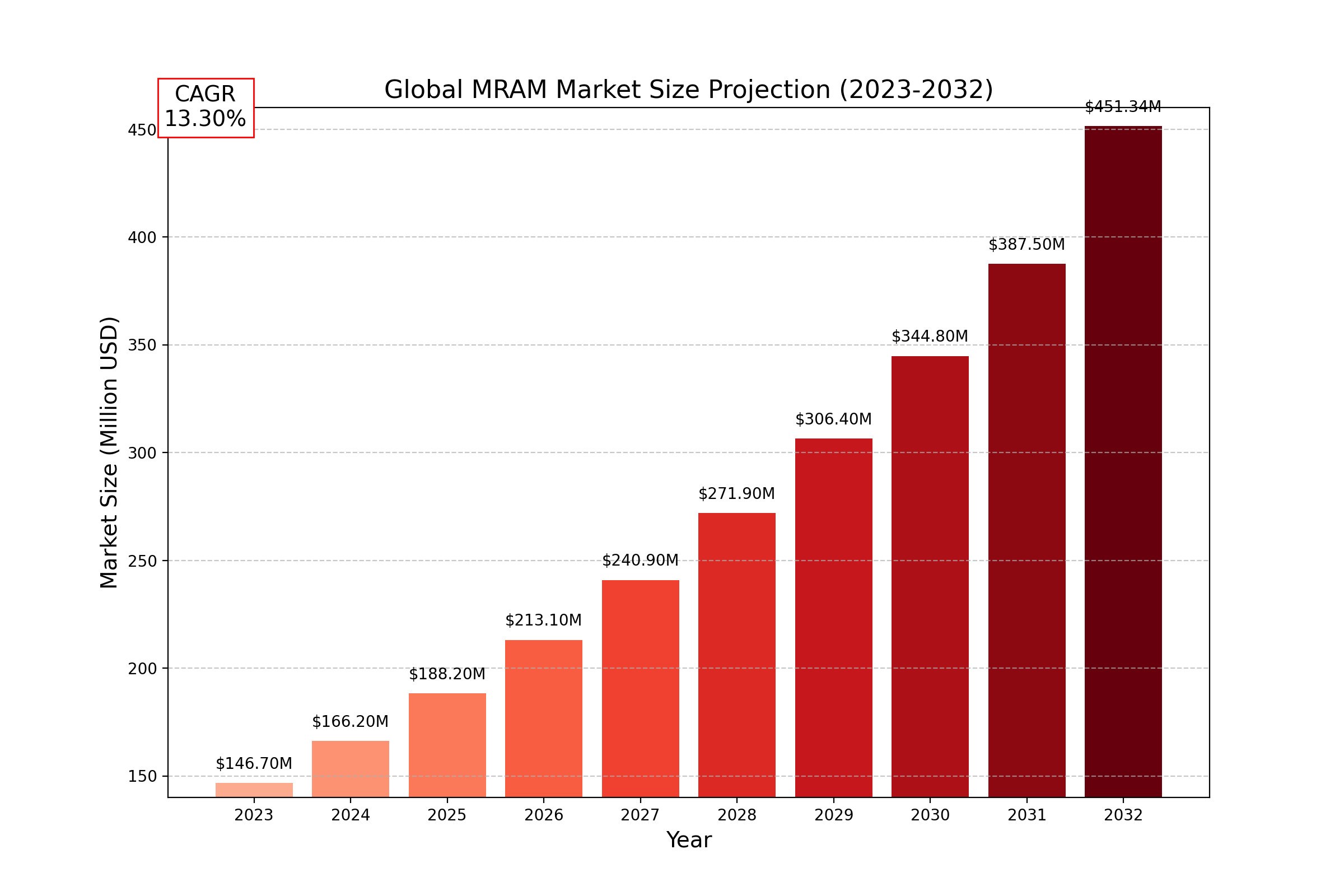TOP CATEGORY: Chemicals & Materials | Life Sciences | Banking & Finance | ICT Media
Magnetoresistive Random Access Memory (MRAM) is a type of non-volatile memory technology that utilizes magnetic charges to store data. Unlike traditional RAM, which requires power to maintain stored information, MRAM retains data even when power is lost. This makes it a promising alternative for high-speed, energy-efficient, and durable memory applications.
MRAM is primarily used in aerospace, automotive, communications, and military applications due to its robustness and ability to function in extreme environments. It operates on the principle of magnetoresistance, where data bits are stored using the magnetic orientation of ferromagnetic layers. The industry is witnessing a surge in demand for MRAM due to its potential to replace existing volatile and non-volatile memory solutions.
The global MRAM market was valued at USD 146.70 million in 2023 and is expected to reach USD 451.34 million by 2032, growing at a CAGR of 13.30% during the forecast period.

North America accounted for a significant portion of the market, with an estimated valuation of USD 47.44 million in 2023. The region is projected to grow at a CAGR of 11.40% from 2025 to 2032, driven by technological advancements and increased adoption in military applications.
Drivers
Growing Demand for Non-Volatile Memory: MRAM's ability to retain data without power consumption is a key driver.
Rising Adoption in Automotive and Aerospace Sectors: The demand for MRAM is increasing in mission-critical applications where data retention and reliability are crucial.
Advancements in Semiconductor Manufacturing: Innovations in spin-transfer torque (STT) MRAM technology are improving data speed and storage efficiency.
Restraints
High Initial Costs: Manufacturing MRAM involves high production costs, which can hinder adoption.
Competition from Established Memory Technologies: NAND Flash and DRAM still dominate the market, creating barriers to MRAM penetration.
Opportunities
Integration with IoT and AI: The increasing adoption of IoT devices and AI-driven applications presents opportunities for MRAM market expansion.
Emerging Applications in Data Centers: MRAM is being explored as an alternative to traditional memory solutions in data centers due to its speed and reliability.
Challenges
Technical Complexity: MRAM production requires specialized expertise, which limits the number of manufacturers.
Scalability Issues: Current manufacturing processes need optimization to meet large-scale commercial demands.
North America
Market valuation in 2023: USD 47.44 million
Key drivers: Government investments in military applications and increasing semiconductor research.
Europe
Countries such as Germany, the UK, and France are leading adopters of MRAM technology in industrial automation and telecommunications.
Asia-Pacific
Rapid growth in semiconductor manufacturing in China, Japan, and South Korea is fueling MRAM demand.
South America & MEA
Emerging adoption in Brazil and South Africa is expected to contribute to market growth in the coming years.
1M
2M
4M
Others
1 What is the current market size of the Magnetoresistive Random Access Memory market?
The global MRAM market was valued at USD 146.70 million in 2023 and is projected to reach USD 451.34 million by 2032, exhibiting a CAGR of 13.30%.
2 Which are the key companies operating in the Magnetoresistive Random Access Memory market?
Key players include Everspin, NXP, Renesas, Honeywell, and STMicroelectronics.
3 What are the key growth drivers in the MRAM market?
The market is driven by demand for non-volatile memory, rising adoption in automotive and aerospace sectors, and advancements in semiconductor technology.
4 Which regions dominate the Magnetoresistive Random Access Memory market?
North America leads the market, followed by Asia-Pacific and Europe.
5 What are the emerging trends in the Magnetoresistive Random Access Memory market?
Key Benefits of This Market Research: